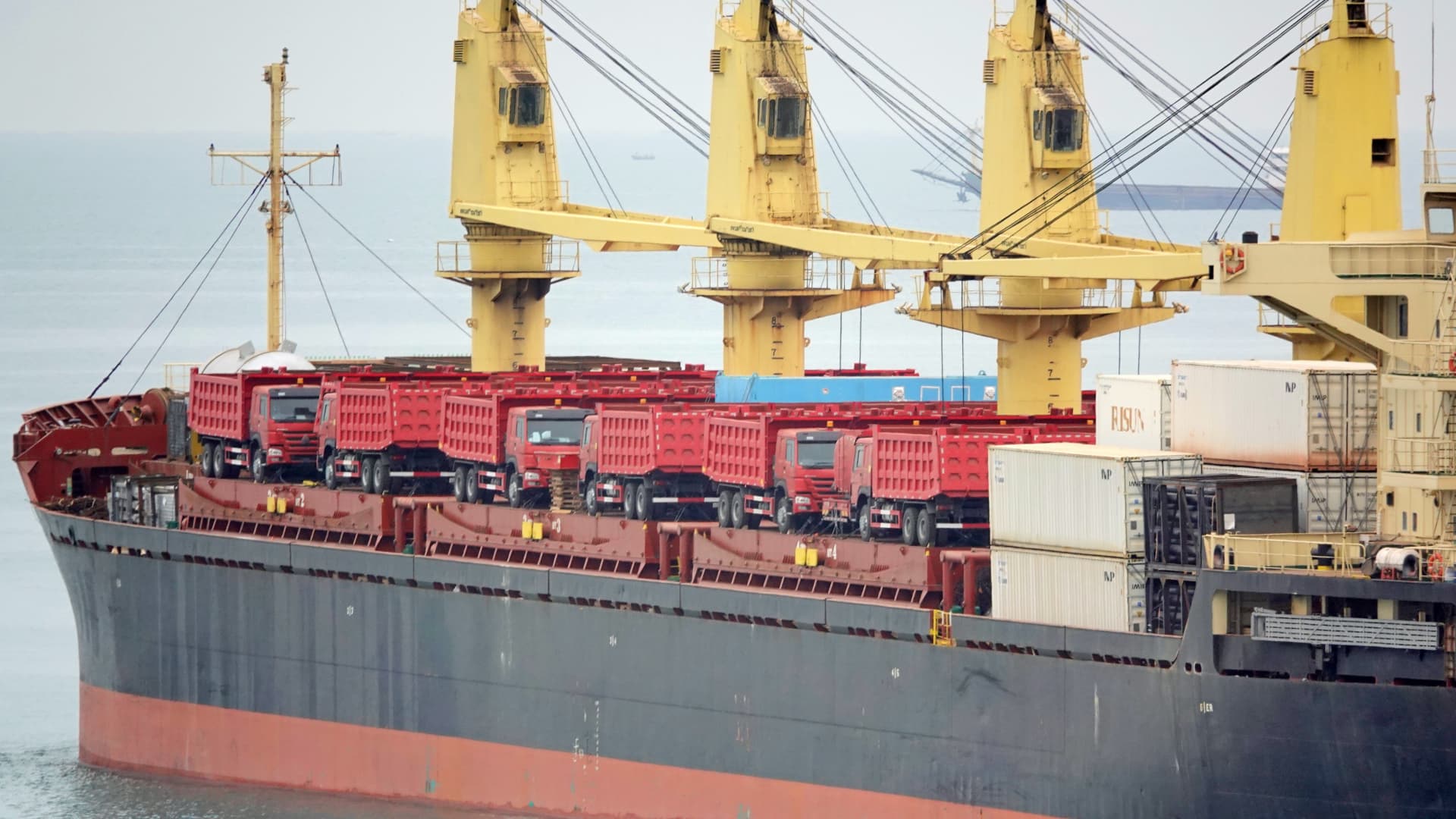Products You May Like
BEIJING — China can’t easily rely on its neighbors as export markets in a global slowdown, the latest trade data show.
Exports to the Association of Southeast Asia Nations have been growing. The 10-member bloc surpassed the European Union during the pandemic to become China’s largest trading partner on a regional basis.
Data showed that exports to Southeast Asia fell by 16% in May compared to a year ago, dragging down China’s overall exports.
Exports to the U.S. — China’s largest trading partner on a single-country basis — fell by 18% from a year ago in U.S. dollar terms in May. That’s according to official figures accessed through Wind Information.
At $42.48 billion, the U.S. exports in May were more than the $41.49 billion China exported to Southeast Asia that month, according to customs data.
Southeast Asia can’t fully offset the loss from the U.S. market, said Bruce Pang, chief economist and head of research for Greater China at JLL.
ASEAN is made up of 10 countries: Brunei, Cambodia, Indonesia, Laos, Malaysia, Myanmar, the Philippines, Singapore, Thailand and Vietnam.
The U.S. is one single market versus a grouping of 10 countries, Pang pointed out, adding that companies can also sell at higher profit margins in the U.S. market.
Trade has been a key driver of China’s growth, especially during the pandemic.
Exports still account for about 18% of the economy, although that’s well below the roughly 30% share it once had, Tao Wang, head of Asia economics and chief China economist at UBS Investment Bank, told reporters Monday.
Drag from the U.S.
Slowing global growth, especially in the U.S. and Southeast Asia, doesn’t bode well for the outlook on Chinese exports.
“We expect China’s exports will remain subdued, as we anticipate the US economy to enter recession in H2 while global destocking pressures continue to rise,” Lloyd Chan, senior economist at Oxford Economics, said in a note Wednesday.
Boosting trade with developing countries has gained urgency with the closing of the US market and the EU-China investment deal falling apart after the Ukraine war.Jack ZhangUniversity of Kansas, assistant professor of political science
Businesses in the U.S. have also been working through high inventory that didn’t get sold in the second half of last year due to high inflation.
U.S. GDP is expected to slow from 2.1% in 2022 to 1.6% this year, according to the International Monetary Fund.
Southeast Asia also slowing
ASEAN’s GDP is set to slow to 4.6% growth this year, down from last year’s 5.7% pace, the IMF said in April, when it trimmed its forecast for the region’s GDP growth by 0.1 percentage points.
“The sizeable slump in May reaffirms our suspicion that China’s monthly export data to some ASEAN economies – particularly Vietnam, Singapore, Malaysia and Thailand — may be somewhat distorted,” Nomura economists said in a note Wednesday.
“Given the apparent plunge, exports to ASEAN has turned from a major driver to a drag, making a negative contribution of -2.4pp to headline growth in May.”
The U.S. and ASEAN each accounted for 15% of China’s total exports in May, according to CNBC calculations of Wind Information data.
On a year-to-date basis, the bloc has a slightly higher share, at 16% of China’s exports versus the United States’ 14% share, the data showed.
“Looking forward, [China’s] exports are likely to shrink further on a high base, the deepening global manufacturing downturn and intensifying trade sanctions from the West,” the Nomura analysts said.
Regional trade strategy
The export declines come as U.S.-China relations remain tense, and Beijing has sought to bolster trade with the developing countries in Asia Pacific.
“It’s 20-25% more expensive to sell lots of stuff to the US, particularly intermediate goods like machine parts,” Jack Zhang, assistant professor of political science at the University of Kansas, told CNBC in an email.
“Boosting trade with developing countries has gained urgency with the closing of the US market and the EU-China investment deal falling apart after the Ukraine war,” he said.
The 10-nation bloc — along with Japan, South Korea, Australia and New Zealand — signed a free trade agreement with China in 2020. The Regional Comprehensive Economic Partnership or RCEP is the largest such deal in the world.
Beijing has said it would also like to join another trade bloc — the Comprehensive and Progressive Agreement for Trans-Pacific Partnership. The U.S. is not part of the CPTPP, while the U.K. announced a deal to join it in March.
RCEP has boosted China’s trade with ASEAN, as has the shift of some labor-intensive manufacturing to the region, Zhang said.
Meanwhile, he noted that “China has been ramping up negotiations for China-ASEAN FTA (CAFTA 3.0), it’s exploring FTAs with Mercusor in LatAm and the Gulf Cooperation Council (GCC).”
The Mercusor trade bloc includes Argentina, Brazil, Paraguay, and Uruguay.
— CNBC’s Clement Tan contributed to this report.
